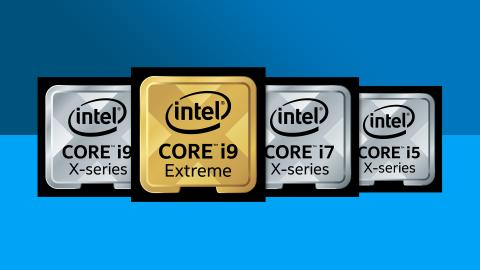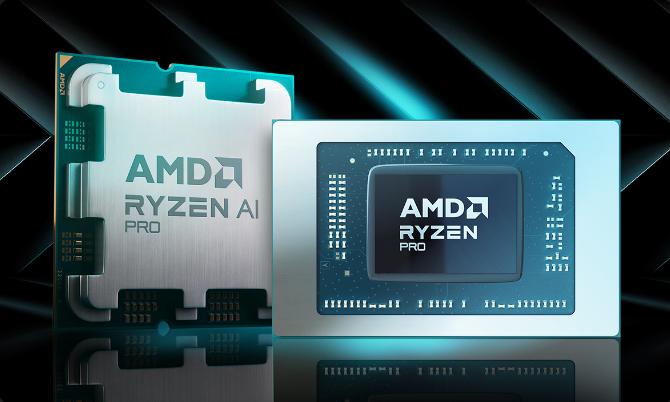Intel and AMD are the most widely used and trusted processor brands in the computer world, known for powering millions of computers worldwide. Both companies manufacture processors with different architectures, features, and performance characteristics, leading to varying preferences among users. It is important to understand the difference between Intel and AMD processors, especially if you are planning to buy or build a new computer. This article provides detailed information about the main differences between Intel and AMD processors (Intel vs. AMD), helping you make an informed decision.
What Is Intel Proccesor
Founded in 1968, Intel launched its first processor, the 4004, in 1971, marking the first commercially available microprocessor. An Intel processor is a central processing unit (CPU) manufactured by Intel Corporation, one of the leading technology companies in the world. It acts as the “brain” of a computer, processing instructions from various software applications, managing data, and performing calculations required to operate the system. Intel processors come in various models, like Intel Core (i3, i5, i7, i9), Intel Xeon for servers, and Intel Atom for smaller devices, each designed to meet different performance needs. Known for their speed, efficiency, and multi-core capabilities, Intel processors are widely used in desktops, laptops, and servers.

What is AMD Processor
An AMD processor is a type of central processing unit (CPU) created by Advanced Micro Devices (AMD), a major company in the computer chip industry. This processor acts as the core part of a computer, handling calculations, running software, and managing data to make the computer operate efficiently. AMD processors come in various lines, such as Ryzen for desktops and laptops, Athlon for budget-friendly devices, and EPYC for servers. Known for high performance, especially in tasks that need multiple cores (like gaming and multitasking), AMD processors are widely used as alternatives to Intel processors in both consumer and professional devices.

Intel vs. AMD Processor Comparison
Intel vs. AMD refers to the competition between two leading manufacturers of computer processors: Intel Corporation and Advanced Micro Devices (AMD). Both companies produce a range of CPUs (central processing units) used in desktops, laptops, and servers, and each has its strengths and weaknesses. Here’s an overview of the key aspects of Intel and AMD.

| Feature | Intel Processor | AMD Processor |
|---|---|---|
| Company | Made by Intel Corporation, founded in 1968 | Made by Advanced Micro Devices (AMD), founded in 1969 |
| Core Performance | Known for strong single-core performance, ideal for gaming | Known for high multi-core performance, good for multitasking and productivity |
| Price Range | Generally higher prices for similar performance levels | Often more budget-friendly for comparable specs |
| Overclocking Support | Limited to “K” series CPUs (e.g., i5-12600K, i7-12700K) | Most Ryzen processors support overclocking |
| Integrated Graphics | Many Intel CPUs include Intel UHD or Iris graphics | Only specific AMD APUs (Ryzen with Radeon Graphics) have integrated graphics |
| Power Efficiency | Typically more power-efficient, especially at higher loads | Consumes slightly more power on average |
| Gaming Performance | Higher single-core speeds, excelling in many games | Strong gaming performance, especially in multi-threaded games |
| Server Solutions | Intel Xeon processors are popular for servers | AMD EPYC processors provide strong server performance, especially for multi-threaded tasks |
| Chipset Compatibility | Newer Intel CPUs often require specific, newer chipsets | AMD offers longer chipset compatibility, supporting older motherboards |
| Thermal Performance | Lower thermal output, often requiring less cooling | Runs slightly warmer, requiring better cooling solutions |
| Market Use | Widely used in business, consumer, and enterprise markets | Popular in gaming, content creation, and workstations |
| Performance per Dollar | Generally offers slightly lower performance per dollar | Provides competitive performance per dollar, especially in mid-range and budget options |
| Architecture Innovation | Known for adopting architecture innovations at a slower pace | Often pioneers new architecture innovations, like chiplet design |
| Socket Longevity | Intel frequently changes socket types with new generations | AMD typically maintains socket compatibility for several generations (e.g., AM4) |
| Processor Families | Includes Intel Core (i3, i5, i7, i9), Xeon, Pentium | Includes Ryzen (3, 5, 7, 9), Threadripper, EPYC, Athlon |
Conclusion
The choice between Intel and AMD ultimately depends on your specific needs and budget. If you’re a gamer looking for high single-core performance, Intel’s Core series may offer a slight edge. However, if you require excellent multi-core performance for productivity tasks or want to maximize value, AMD’s Ryzen processors provide strong competition. Both companies offer quality products, and each has its strengths. Intel is known for its single-core speed, while AMD shines in multi-core performance and affordability. Understanding these differences can help you choose the processor that best suits your computing needs.
Recommended Articles
- ALU Full Form in Computer: Definition, Functions, and Importance
- What Is A Computer Mouse? Features, Functions, Types, And Uses
- What Is VRAM? Everything You Need To Know About VRAM
- 32 Bit vs 64 Bit : Performance, Compatibility, and Limitations
- What Is Device Driver? Functions, Types, and Examples
- What Is Motherboard? Types Functions, Features, And Importance
- What Is Icons In Computer And Why Are They Important?
- What Is Data? Types, Usage And Importance In Computing?
- DDR3 vs DDR4: Speed, Efficiency, and Performance
- Top 20 Highest Salary Jobs : Lucrative Careers with Best Salaries - 5 April 2025
- Types of Operating System (OS): Features,Types And Uses - 5 April 2025
- 15 Features of Operating System You Should Know - 4 April 2025










